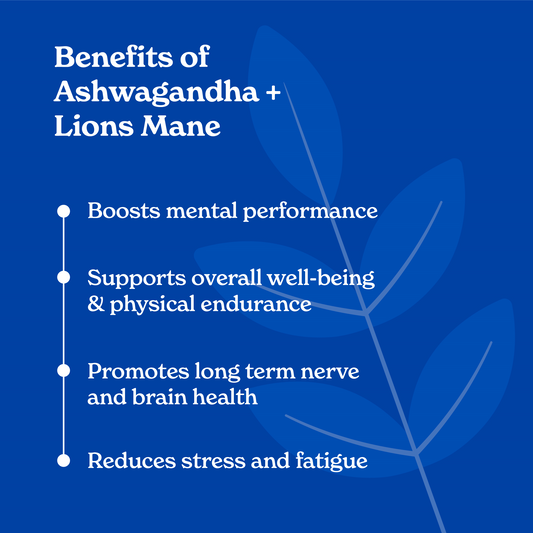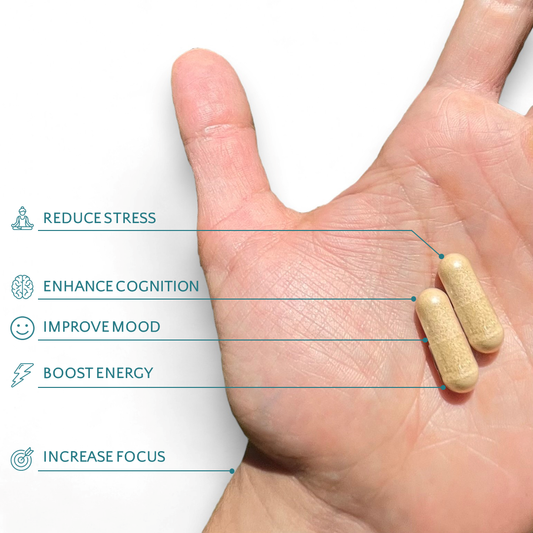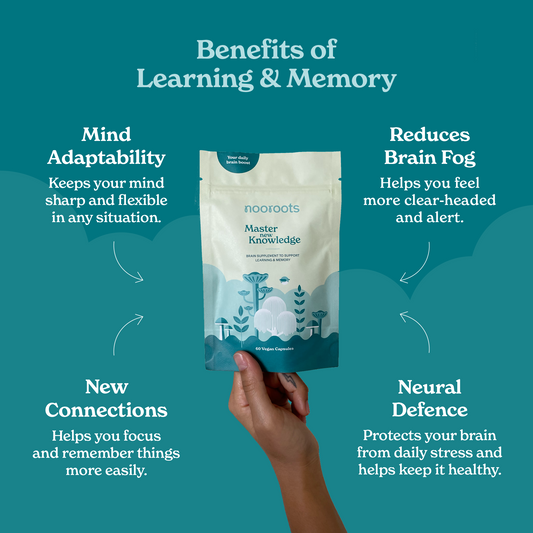Expert Writer and Contributor ✓
About the Author
Charlotte was awarded a Master of Science degree in chemistry from the University of Bristol. She is currently completing a PhD at the University of Leeds.
About the Contributor
Mus was awarded a Master of Science degree in Medical Biotechnology and Business Management from the University of Warwick.
It is human nature to do good to others. It is the nature of a scientist to help others through their research. Therefore it is unsurprising that the story of discovery for nutritional and medical breakthroughs are often interwoven and share similar histories.
This was the case for Vitamin B9 (Folate) in helping treating Anaemia in pregnant women. Likewise, Vitamin B1 (Thiamine) helped treat Beriberi in Japanese soldiers. And it is also true for Vitamin B3 (Niacin) and Pellagra – a disease affecting the whole body that can eventually lead to death if untreated.
There is a saying in science: “Stand on the Shoulders of Giants”. A nod to the accumulation of knowledge that leads to progress.
Disclaimer: not everyone is looking at the knowledge through the same lenses.
What sets apart average scientists from those who make breakthrough discoveries are how they view the world. Those who can view the world at its simplest have an advantage. Who can see naked truths. Observe root causes. Analyse hidden patterns in a world full of noise.
The discovery on Vitamin B3 (Niacin), can, through a certain lens, be viewed as a tale of three scientists. Meet the first giant in our story: Casimir Funk. Casimir was a Polish-American biochemist who first isolated a form of Niacin in 1912. He tried to use this isolated form of Niacin to cure Beriberi. Unfortunately he failed and eventually abandoned his work.
Then in 1915, the second giant Austrian-American physician Joseph Goldeberger found (somewhat controversially by today standards) he could give prisoners in Mississippi a disease called Pellagra by controlling what foods they ate. He hypothesized some factor in food was causing the disease but wasn’t sure what this factor was.
It wasn’t until 1937 the research came full circle. Meet our third and final giant: American biochemist Conrad Arnold Elvehjem. He discovered the structure of Niacin and used it to treat Pellagra in dogs.
Giants come in all shapes and sizes. It took over 20 years to make the breakthrough that would ultimately help millions of people. For the good of all society, it was well worth the wait. New insights of future giants found the benefits of supplementing Vitamin B3 (Niacin) go far beyond treating Pellagra.
Contents
- What is Vitamin B3 (Niacin)?
- Vitamin B3 (Niacin) Deficiency
- Vitamin B3 (Niacin) Benefits
- Vitamin B3 (Niacin) Mechanism of Action
- Vitamin B3 (Niacin) Side Effects
- Recommended Dosages of Vitamin B3 (Niacin)
- Best Natural Food Sources of Vitamin B3 (Niacin)
Vitamin B3 (Niacin): A Health Guide to Safe and Effective Supplementation

What is Vitamin B3 (Niacin)?
Niacin, another name for vitamin B3, is a member of the B-vitamin of essential micro-nutrients that we need to support our body’s healthy functioning1.
Nicotinic acid, a compound that is made from niacin in the body, was first synthesised in 1867. However, scientists didn’t know the importance of this compound to our health! The effect that niacin has on our cholesterol levels was observed in 1955 by Dr Rudolf Altshul, but the vitamin and its relevance to nutrition was discovered in 19372!
Vitamin B3 (Niacin) Deficiency
Pellagra is the condition caused by niacin deficiency, and can be identified by characteristic, nasty symptoms caused by the ‘Three D’s’3,4. These are:
- Diarrhoea
- Dermatitis
- Dementia
Other effects of more mild niacin deficiency include5:
- Skin rash
- Swollen mouth/tongue
- Migraines or headaches
- Fatigue
Vitamin B3 (Niacin) Benefits
Niacin is a vital vitamin, and therefore has a plethora of benefits to us and our bodies! Some of the benefits from taking niacin include:
- Cholesterol improver: Nicotinic acid (made from niacin in the body) is an ‘anti-hyperlipidemic’ agent. It reduces ‘bad’ cholesterol and increases ‘good’ cholesterol in the blood!6
- Anti-inflammatory: Niacin has anti-inflammatory properties6,7. This has been shown to play an important role in reducing atherosclerosis (thickening/hardening of arteries). This is important for preventing coronary heart disease8!
- Antioxidant: As an antioxidant, vitamin B3 protects cells against oxidative stress and damage6,7.
- Cognitive enhancer: Nicotinamide, also made from niacin in the body, protects neurons in the brain and aids memory and cognition6,9.
Vitamin B3 (Niacin) Mechanism of Action
Niacin is converted into two different forms in the body: nicotinic acid and nicotinamide. Both of these ‘vitamers’ are crucial for producing energy and regulating the function of cells6.
Nicotinic acid is well-known for its ability to control levels of harmful low density lipoprotein (LDL) cholesterol, whilst increasing the level of beneficial high density lipoprotein (LDL) in the blood. It has anti-inflammatory properties, and acts as an antioxidant to protect cells against damage from pesky free radicals6,10!
Nicotinamide is especially useful for looking after our central nervous system. It protects neurons by preventing their inflammation and death, and has been shown to help age-related cognitive decline. This incredible compound promotes mitochondrial function in cells to aid their energy metabolism, which is particularly important for our learning skills and memory6,11!
Niacin is therefore a crucial vitamin for improving our cholesterol levels (reducing harmful cholesterol and increasing ‘good’ cholesterol), as well as being a brain boosting nootropic!
Vitamin B3 (Niacin) Side Effects
nooroots products remains below the maximum recommended daily intake (35 mg). Possible side effects of niacin can include3,4:
- Flushing: itching, burning and tingling
- Stomach upset
- Dizziness
- Liver damage at extremely high doses (e.g. > 3 g/day)
Recommended Dosages of Vitamin B3 (Niacin)
The Nutrient Reference Value (NRV) for Vitamin B3 (Niacin) is 16mg (milligram). The safe upper limit (SUL) for Vitamin B3 (Niacin) is set at 35mg (milligram).
Learn More About NRV and SUL
The NRV and SUL are two values assigned to vitamins and minerals that are designed to provide guidance on how much of a specific nutrient can be consumed.
NRV can be defined as the amount of a specific nutrient needed to adequately meet known nutritional deficiencies. Whereas the SUL is the highest level of nutrient intake that is likely to pose no risk of bad health effects for almost all individuals in the general population.
It is very safe to consum levels of nutrients greater than the NRV as long as the intake is below the SUL.
At nooroots, we take both these values into consideration when performing research and product development. We work with our scientists and partners to select a nutrient level that is both safe and effective.
Conclusion
Looking back in time is easier than trying to envision the future. Looking back in time it is easy to judge ourselves and others with the new knowledge we are armed with in the present. You could say, looking back, is like looking through a unique lens that helps connect the dots.
While Conrad Arnold Elvehjem looked backward at the work of the giants that came before him. He also dared to look forward, link the dots of discovery and uncover the structure of Vitamin B3 (Niacin). Those who came after him found Niacin helps to: improve cholesterol, reduce inflammation, protect cells against damage and enhance cognition.
When supplementing Vitamin B3 (Niacin), the recommended doses should be followed. Moderate use is OK but a safe upper limit of 35mg has been established.
For those interested in taking the first step, our Learning & Memory Nootropic Supplement at Nooroots offers a carefully formulated introduction to the world of cognitive enhancement—crafted to support both clarity of mind and balance of mood.
Learn more about the other vitamins, minerals and plant extracts we use to give your brain a daily boost
Evidence
- Niacin – Vitamin B3 | The Nutrition Source | Harvard T.H. Chan School of Public Health. https://www.hsph.harvard.edu/nutritionsource/niacin-vitamin-b3/ (accessed 2022-05-11).
- Niacin History. News-Medical.net. https://www.news-medical.net/health/Niacin-History.aspx (accessed 2022-05-14).
- Niacin (Vitamin B3) : Benefits, Dosage, Sources, Risks. https://www.webmd.com/diet/supplement-guide-niacin (accessed 2022-05-11).
- Niacin: Health Benefits, Side Effects, Uses, Dose & Precautions. RxList. https://www.rxlist.com/niacin/supplements.htm (accessed 2022-05-13).
- Dunkin, M. A. Niacin Deficiency: Symptoms, Causes, and Treatment. WebMD. https://www.webmd.com/diet/niacin-deficiency-symptoms-and-treatments (accessed 2022-05-14).
- Gasperi, V.; Sibilano, M.; Savini, I.; Catani, M. V. Niacin in the Central Nervous System: An Update of Biological Aspects and Clinical Applications. International Journal of Molecular Sciences 2019, 20 (4), 974. https://doi.org/10.3390/ijms20040974.
- Graff, E. C.; Fang, H.; Wanders, D.; Judd, R. L. Anti-Inflammatory Effects of the Hydroxycarboxylic Acid Receptor 2. Metabolism 2016, 65 (2), 102–113. https://doi.org/10.1016/j.metabol.2015.10.001.
- Yu, B.; Zhao, S. Anti-Inflammatory Effect Is an Important Property of Niacin on Atherosclerosis beyond Its Lipid-Altering Effects. Medical Hypotheses 2007, 69 (1), 90–94. https://doi.org/10.1016/j.mehy.2006.11.026.
- Morris, M. C.; Evans, D. A.; Bienias, J. L.; Scherr, P. A.; Tangney, C. C.; Hebert, L. E.; Bennett, D. A.; Wilson, R. S.; Aggarwal, N. Dietary Niacin and the Risk of Incident Alzheimer’s Disease and of Cognitive Decline. Journal of Neurology, Neurosurgery & Psychiatry 2004, 75 (8), 1093–1099. https://doi.org/10.1136/jnnp.2003.025858.
- Pizzino, G.; Irrera, N.; Cucinotta, M.; Pallio, G.; Mannino, F.; Arcoraci, V.; Squadrito, F.; Altavilla, D.; Bitto, A. Oxidative Stress: Harms and Benefits for Human Health. Oxid Med Cell Longev 2017, 2017, 8416763. https://doi.org/10.1155/2017/8416763.
- Fricker, R. A.; Green, E. L.; Jenkins, S. I.; Griffin, S. M. The Influence of Nicotinamide on Health and Disease in the Central Nervous System. Int J Tryptophan Res 2018, 11, 1178646918776658. https://doi.org/10.1177/1178646918776658.







